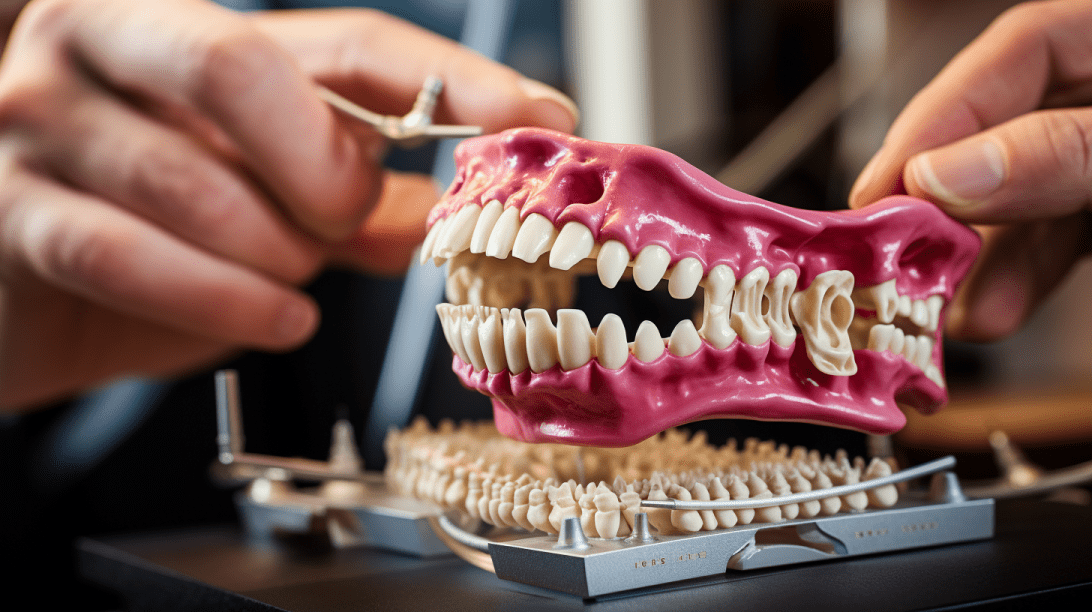Photo was created by Webthat using MidJourney
In recent years, the world has witnessed the transformational power of 3D printing across various industries. From manufacturing to healthcare, this technology has reshaped traditional processes and opened up new avenues for innovation. One of the most remarkable applications of 3D printing is in the field of dentistry, particularly in the production of clear dental aligners. In this article, we will delve into the fascinating world of 3D-printed dental aligners, how they are disrupting the billion-dollar smile business, and what the future holds for this rapidly evolving industry.
1. Clear Aligners and the 3D Printing Revolution
Clear dental aligners have taken the orthodontic world by storm. Brands like Invisalign, developed by Align Technology, have gained significant traction due to their discreet and comfortable design. A key driving force behind the success of these clear aligners is the integration of printing technology. This revolutionary approach has allowed for the mass production of customized aligners tailored to each patient’s unique dental structure.
2. From Local to Global: The Shift in Scale
The dental aligner industry, which was once limited to localized production, has undergone a paradigm shift with the advent of printing. This technology has enabled the transformation of individualized dental treatments into a large-scale manufacturing process. As a result, companies like Invisalign are now capable of producing patient-specific aligners for millions of individuals around the world.
3. The Rise of Independent Aligner Businesses
The accessibility of printing technology has paved the way for independent players to enter the dental aligner market. Entrepreneurs like Pablo Kehyaian, a Madrid-based orthodontist, recognized the potential of this technology to disrupt the market. Dissatisfied with existing aligner options, Kehyaian embarked on a journey to create his own aligner business, SecretAligner. This demonstrates how printing has democratized the industry and lowered the barriers to entry.
4. The Making of Custom Dental Models
Contrary to common belief, the aligners themselves are not 3D printed. Rather, it is the dental models that are created using printing technology. Dentists and orthodontists employ specialized software to plan the movement of teeth and generate a sequence of 3D models, each representing different stages of treatment. The aligners are then thermoformed around these models, ensuring a precise fit for the patient.
5. Empowering Start-ups with 3D Printing
Start-ups like SecretAligner have harnessed the potential of 3D printing technology to disrupt the dental aligner industry. With the guidance of companies like Formlabs, which not only provides 3D printers but also offers training and support, entrepreneurs are empowered to bring their innovative ideas to life. This comprehensive approach has enabled companies like SecretAligner to rapidly scale their operations and meet growing demand.
6. Automation and Scalability with 3D Printing
Formlabs’ new Automation Ecosystem exemplifies the marriage of printing and automation. This software-hardware integration allows companies like SecretAligner to manage multiple 3D printers simultaneously, optimizing production efficiency. Automated processes, such as model removal and collection, reduce labor costs and enable continuous production, even during non-operational hours.
7. Beyond Aligners: Disrupting Traditional Braces
The impact of 3D printing extends beyond clear aligners. Innovators like LightForce are revolutionizing the traditional braces market. By utilizing 3D printing technology, LightForce creates custom ceramic brackets tailored to each individual tooth. This advancement has led to increased comfort for patients and shorter treatment times, highlighting the potential of 3D printing in orthodontics.
8. The Path Forward: Customization and Innovation
As 3D printing technology continues to evolve, the dental industry is poised for further disruption. Entrepreneurs like Kehyaian foresee a future where aligners can be 3D printed directly, eliminating the need for mold-making. This transition could significantly reduce waste and enhance treatment efficiency. Additionally, the alignment industry is likely to witness advancements in materials, further enhancing patient comfort and treatment outcomes.
9. Transforming Orthodontics at Scale
The remarkable transformation of the dental industry through 3D printing underscores its potential to reshape traditional practices. Independent businesses like SecretAligner and innovative solutions like LightForce have demonstrated that 3D printing is not just a technological advancement but a catalyst for change. With patient-specific manufacturing at its core, 3D printing has unlocked possibilities that were previously unimaginable, ultimately benefiting both patients and practitioners.
Final Thoughts
The integration of 3D printing technology has ushered in a new era for the dental industry. The production of clear aligners and customized orthodontic solutions has been revolutionized, offering patients improved comfort and convenience. As technology continues to evolve, the dental field can expect even more transformative changes. The marriage of innovation and patient-centric care has positioned 3D printing as a cornerstone of the billion-dollar smile business.


